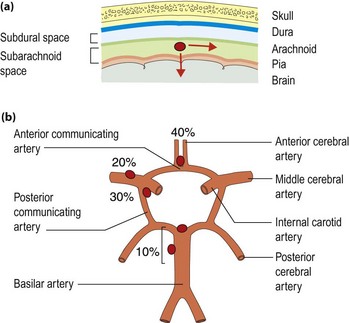The Subarachnoid Space

The subarachnoidal space is the space between the skull and the neck. It's full of CSF, which is a fluid that acts as a cushion to support the head (thus the name 'floating'). When blood flows into the subarachnoidal space, it inflames the blood vessels surrounding the brain (causing a stroke), causes pressure on the head, and damages some brain cells.
Since the subarachnoid is filled with cerebrospinal fluid, it is in direct contact with the cerebrospinal fluid. In fact, this is the main route through which blood enters the human brain. Blood enters the brain through capillaries. Passing through these capillaries, blood passes through the venous sinuses, which are small, deep airless passages through which excess fluids are removed from the body. The blood then enters the blood vessels in the brain, or vessels, which transport nutrients and oxygen to and from the brain tissues.
The brain is made up of approximately 100 billion neurons. The subarachnoid contains over 100 trillion neurons. These neurons perform many functions, including transmitting information from the spinal cord and brainstem, processing information from the central nervous system, transmitting impulses from the peripheral nervous system, and sending messages to the autonomic nervous system and reproductive organs.
The brain also has a covering called the dentate gyrus, which is located just below the cortex and above the brain. This area is directly related to the motor cortex. Its main function is to process sensory information that the brain receives. The dentate gyrus is responsible for controlling many motor functions such as eye movements, mouth movements, muscle contractions, grasping and movement, and speech production.
Subarachnoids can also grow in size. These increases are due to the brain stem and large brain continuing to produce cerebrospinal fluid even when there is no pressure in that area. This is called swelling or "swelling of the head."
In some cases, there is a narrowing or narrowing of the subarachnoid arteries or veins, which may be responsible for the subarachnoid space. problem. For example, in a child with a cleft palate, the cleft bones separate from each other, resulting in an elongated cleft. While the baby sleeps, the cleft swallows air through the airway, but the cleft also swallows the cleft.
The air stream is then forced into the subarachnoid space, where it induces pressure
While the most common causes of a subarachnoid space are trauma (such as a bullet lodged in the head), some medications, infection, and aneurysms, other causes are more unusual. A child's diet (eg, eating too much salt, chocolate, caffeinated beverages) may also cause a narrowing of this space.
There are three different types of treatments for a narrowing of the subarachnoid space. In most cases, surgery is required to reduce the pressure. In rare cases, if the bones have not separated at birth, or if there is only one type of bone involved, then the bone will separate. In this case, the surgeon will try to create an opening in the skull to allow drainage. through the opening.
The first procedure is called a bunionectomy. The surgeon removes a bunion, the large calcaneal bone, that can cause a narrowing of the space. or cause pain in the area.
The second surgical procedure is called a chondromalangea. The surgeon removes cartilage from the bone to enlarge the subarachnoid spaces.
The third procedure is called a root canal, and it is similar to a dental root canal. The surgeon implants a nerve or muscle into the nerve channel.
If the subarachnoid spaces are too narrow, the patient may require a combination of treatments to correct the situation. Treatments include surgery, injections, diet, surgery, and injections.